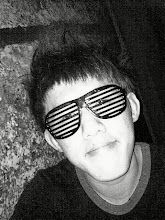



Boracay is an island of the Philippines located approximately 315 km (200 miles) south of Manila and 2 km off the northwest tip of the island of Panay in the Western Visayas region of the Philippines. In 1990, it was voted by the BMW Tropical Beach Handbook as one of the best beaches in the world and again in 1996 by British publication TV Quick as the world's number one tropical beach.
The island comprises the barangays of Manoc-Manoc, Balabag, and Yapak (3 of the 17 barangays which make up the municipality of Malay), and is under the administrative control of the Philippine Tourism Authority in coordination with the Provincial Government of Aklan.
The island was originally home to the Ati tribe. Boracay is part of Aklan Province, which became an independent province on April 25, 1956.Formerly undiscovered, it wasn't till the 1970s that tourism began to develop in Boracay, and the island became popular with backpackers in the 1980s.
Years ago, Boracay Island was a well-guarded secret, almost possessively so that only a few knew of its existence.
It was only in the 70s when, it is said, a foreign movie crew accidentally "discovered" this island paradise. Others maintain that it was the German traveler, 'Jens Peters' book, which included rave reviews of Boracay that changed the island’s pace from that of being a quiet secret to eventually being voted as having the best beach in the world.
Whichever story is true, it was around this time that Boracay Island slowly ceased to be a private travelers hangout and eventually became one of the major tourist destinations in the Philippines.
Boracay Island is located off the northwest corner of Panay Island, and belongs to the Western Visayas island-group, or Region VI, of the Philippines. The island is approximately seven kilometers long, dog-bone shaped with the narrowest spot being less than one kilometer wide, and has a total land area of 10.32 square kilometers.
South-facing Cagban Beach is located across a small strait from the jetty port at Caticlan on Panay island, and the Cagban jetty port serves as Boracay's main entry and exit point during most of the year. When wind and sea conditions dictate, east-facing Tambisaan Beach serves as an alternative entry and exit point.
Boracay's two primary tourism beaches, White Beach and Bulabog Beach, are located on opposite sides of the island's narrow central area. White Beach faces westward and Bulabog Beach faces eastward. The island also has several other beaches.
White Beach is the main tourism beach. It is about four kilometers long and is lined with resorts, hotels, lodging houses, restaurants, and other tourism-related businesses. In the central portion, for about two kilometers, there is a footpath known as the Beachfront Path separating the beach itself from the establishments located along it. North and south of the Beachfront Path, beachfront establishments do literally front along the beach itself. Several roads and paths connect the Beachfront Path with Boracay's Main Road, a vehicular road which runs the length of the island. At the extreme northern end of White Beach, a footpath runs around the headland there and connects White Beach with Diniwid Beach.
Bulabog Beach, across the island from White Beach, is a secondary tourism beach and Boracay's main windsurfing and kiteboarding area.
Boracay is divided, for land use and conservation purposes, into 400 hectares of preserved forestland and 628.96 hectares of agricultural Land.
Partly because of its wind and weather patterns, tourism in Boracay is at its peak during the Amihan season. During Amihan, the prevailing wind blows from the east. Boracay's main tourism area, White Beach, is on the western side of the island and is sheltered from the wind. During the Amihan season, the water off White Beach is often glassy-smooth. On the eastern side of the island, hills on the northern and southern ends of the island channel the Amihan season wind from the east onshore, onto Bulabog Beach in the central part of the island's eastern side. This makes the reef-protected waters off that beach ideal for windsurfing and kiteboarding / kitesurfing.
Leisure activities available on Boracay include scuba diving, snorkeling, windsurfing, kiteboarding and beach relaxation.
Boracay is the site of a world-class 18-hole par 72 golf course designed by Graham Marsh. In addition, Boracay now has in excess of 350 beach resorts with more than 2,000 rooms ranging in quality from five-star to budget accommodations, so tourists are sure to find whatever they are looking for.
In addition, Boracay offers a wide range of restaurants, bars, pubs, and nightclubs.
The first settlers of Boracay, A negrito people called Ati, spoke a Visayan language called Inati.Later settlers brought other languages to the island, including Aklanon (as Boracay is part of Aklan province) and other Visayan languages, Tagalog (and its variant, Filipino), and English.

No comments:
Post a Comment